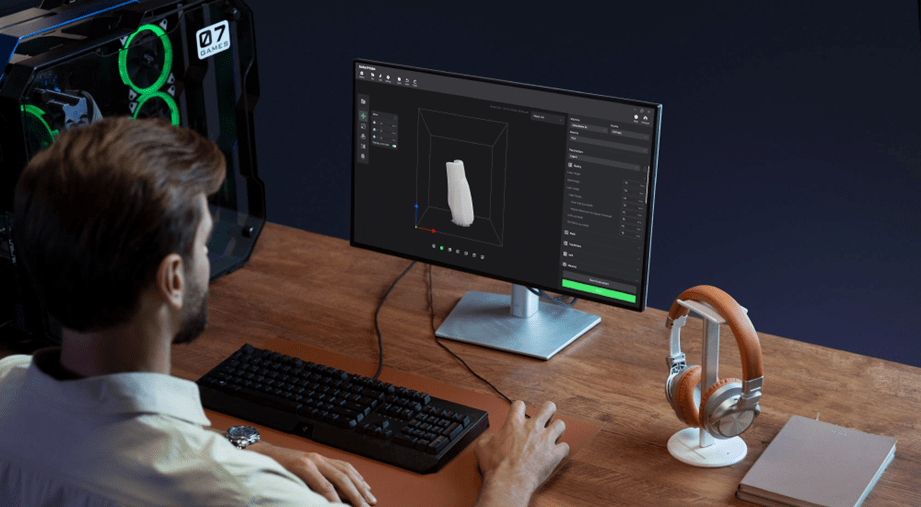Tech
Essential Tips for Beginners in 3D Printing

Embarking on the exciting journey of 3D Printing is akin to opening the door to a realm of limitless creative possibilities. However, for beginners, establishing a solid foundation is imperative. Whether you identify as an artist, hobbyist, or tech enthusiast, the key to a successful 3d printing for beginners adventure lies in understanding the fundamentals. Once you’ve chosen your printer and mastered the basics of design, delve into the essential aspects of printer settings and calibration. Understanding parameters like layer height, print speed, and temperature is crucial for optimizing print quality and efficiency. Regular calibration, addressing bed level, extruder, and temperature settings, ensures the precision required for consistent and accurate prints.
Choosing the Right 3D Printer
The journey into 3D Printing begins with a critical decision—choosing the right 3D printer. This decision is the cornerstone of a seamless and enjoyable printing experience. Several factors demand careful consideration in this selection process. Selecting the right 3D printer involves a thoughtful analysis of factors such as print volume, resolution, and ease of assembly. Making an informed selection is based on thorough research and considering user reviews. Aligning the chosen printer with your specific needs and skill level ensures a smoother transition into the exciting realm of 3D Printing.
Mastering Printer Settings and Calibration
Understanding your printer’s settings is paramount to achieving optimal print quality. Explore parameters such as layer height, print speed, and temperature, and learn how they influence the outcome. Additionally, it delves into the importance of regular calibration for maintaining precise prints. This section will provide practical insights into adjusting settings and calibrating your printer for consistent and accurate results.
Filament Selection and Print Bed Adhesion
Choosing the right filament is a critical aspect of 3D Printing. Explore the properties of different filaments, such as PLA and ABS, and understand how they affect your prints. Delve into techniques for ensuring proper bed adhesion to prevent print failures, including glue sticks, heated beds, and brims. This section will guide beginners through the intricacies of filament selection and bed adhesion for successful 3D prints.
Maintenance, Support, and Community Engagement
Discuss the importance of inspecting moving parts, cleaning the nozzle, and lubricating components. Explore using supports and rafts for printing complex models and how to add and remove them efficiently. Lastly, emphasize the value of joining the 3D printing community for insights, troubleshooting tips, and camaraderie. This section will highlight the holistic approach to 3D Printing, including maintenance, support structures, and community engagement.

Conclusion
Laying a solid foundation for your trip involves selecting a model that fits your demands while considering aspects like print volume and simplicity of setup. To truly excel, mastery of printer settings becomes paramount. Delve into the intricacies of layer height, print speed, and temperature, as this knowledge empowers you to optimize the quality and efficiency of your prints. Calibration, addressing aspects such as bed level and temperature settings, is the bridge to achieving the precision necessary for consistent and accurate outcomes.
As you navigate this terrain, the significance of filament selection cannot be overstated. Each material has unique properties; understanding these nuances is crucial for successful prints. Implementing proper bed adhesion techniques further ensures the reliability of your photos, be it through the application of glue sticks, heated beds, or the strategic use of brims.
Beyond the technical aspects, the communal part of 3D Printing adds an enriching layer to the experience. Engaging with the vibrant 3D printing community, both online and locally, provides a valuable network for insights, troubleshooting tips, and a shared sense of enthusiasm. Regardless of its outcome, every print is a valuable learning opportunity, guiding you toward continuous improvement.

-

 Health6 years ago
Health6 years agoAdvantages and Disadvantages of Milk
-

 Tech4 years ago
Tech4 years ago6 Tips to Improving E-Commerce Websites
-

 Home6 years ago
Home6 years agoAdvantages and Disadvantages of Village Life in Points
-

 Travel5 years ago
Travel5 years agoAdvantages and Disadvantage of Travelling
-

 Sports4 years ago
Sports4 years agoThe benefits of playing an online live casino
-

 Tech6 years ago
Tech6 years ago10+ Advantages and Disadvantages of Mobile Phones in Points
-

 Tech5 years ago
Tech5 years agoEssay on Advantages and Disadvantages of Offline Shopping
-

 Tech5 years ago
Tech5 years ago8+ Advantages and Disadvantages of Motorcycle |Having Bike